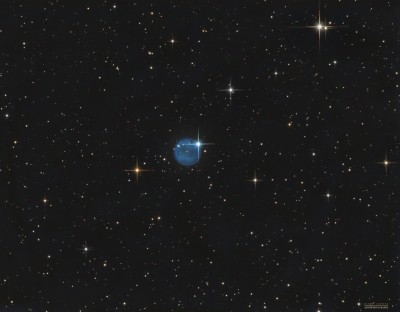by Zapo » Sun Apr 09, 2023 9:46 am
Abell33 - The Diamond Ring Nebula
Created when an aging star blew off its outer layers, this beautiful blue bubble is, by chance, aligned with a foreground star, and bears an uncanny resemblance to a diamond engagement ring. This cosmic gem is unusually symmetric, appearing to be almost perfectly circular on the sky.
Credit: Jaume Zapata & Robert Gas
Location: Observation Field of the Sabadell Astronomical Association (Montsec - Àger)
GSO 200/1000 & SW 200/1000, each with ZWO ASI2600MM Pro cameras.
RGB + OIII
- Attachments
-

Abell33 - The Diamond Ring Nebula
Created when an aging star blew off its outer layers, this beautiful blue bubble is, by chance, aligned with a foreground star, and bears an uncanny resemblance to a diamond engagement ring. This cosmic gem is unusually symmetric, appearing to be almost perfectly circular on the sky.
Credit: Jaume Zapata & Robert Gas
Location: Observation Field of the Sabadell Astronomical Association (Montsec - Àger)
GSO 200/1000 & SW 200/1000, each with ZWO ASI2600MM Pro cameras.
RGB + OIII